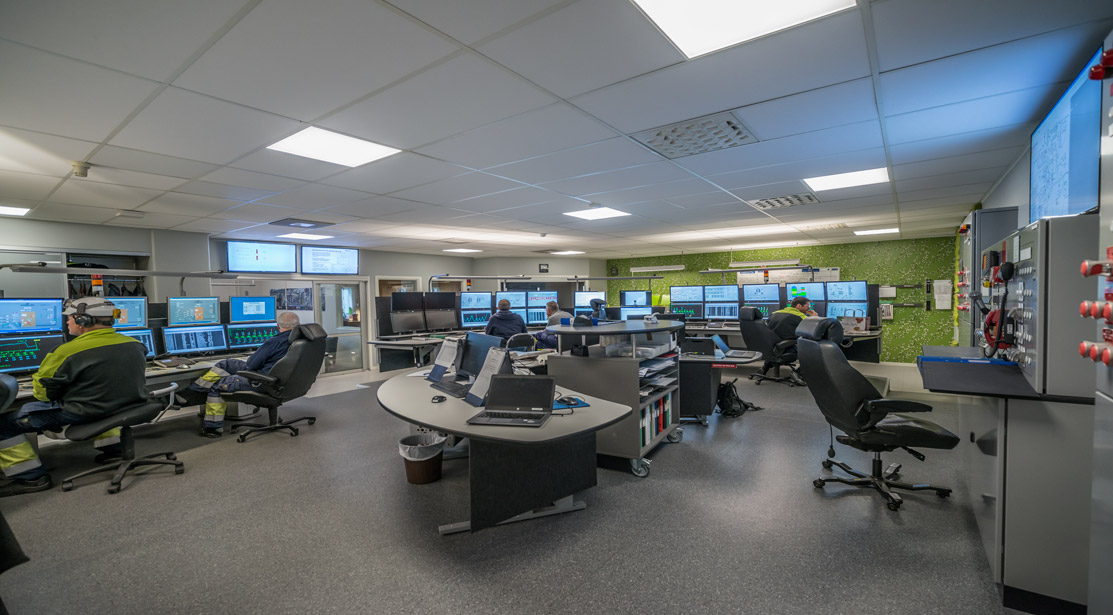Research on control room environments shows that most accidents happen during the night shifts – especially in the last hours of those shifts. The control room lighting plays a role in illuminating the most important parts of the panels to avoid information overload while providing the correct lighting level at times when it’s needed.
Lighting for control rooms plays an important role in regulating the operators’ circadian rhythms. Depending on the shift cycle, tuneable white luminaires or Human Centric Lighting may help adapt the operators’ inner clocks so they match a night shift schedule, or it can help to avoid switching over to a different cycle even when working at night. Both scenarios require careful control over the intensity and duration of the exposure to tuneable white light. Light also has a short-term attention-focusing effect. By boosting light intensity levels and colour temperature in short periods of time, often at the end of the night shift, the control room operators may experience alertness increases and thereby avoid losing focus and causing accidents.

Lighting requirements in EN 12464-1
General areas inside buildings – Control rooms
| Type of task / activity area |
Lux-level (Em) |
Glare rating (UGRL) |
Uniformity (U0) |
Colour rendition (Ra) |
Em,z | Em,wall | Em,ceiling | Specific requirements |
|
| required | modified | U0 ≥ 0,10 | |||||||
| Plant rooms, switch gear rooms | 200 | 300 | 25 | 0,40 | 80 | 50 | 50 | 30 | |
| Telex, post room, switchboard | 500 | 750 | 19 | 0,60 | 80 | 150 | 150 | 100 | |
| Surveillance station | 300 | 500 | 19 | 0,60 | 80 | 100 | 100 | 75 | 1. Control panels are often vertical 2. Lighting should be dimmable 3. DSE-work |
For power stations
| Type of task / activity area |
Lux-level (Em) |
Glare rating (UGRL) |
Uniformity (U0) |
Colour rendition (Ra) |
Em,z | Em,wall | Em,ceiling | Specific requirements |
|
| required | modified | U0 ≥ 0,10 | |||||||
| Control rooms | 500 | 1000 | 19 | 0,70 | 80 | 150 | 150 | 100 | 1. Control panels are often vertical 2. Lighting should be dimmable 3. DSE-work |
